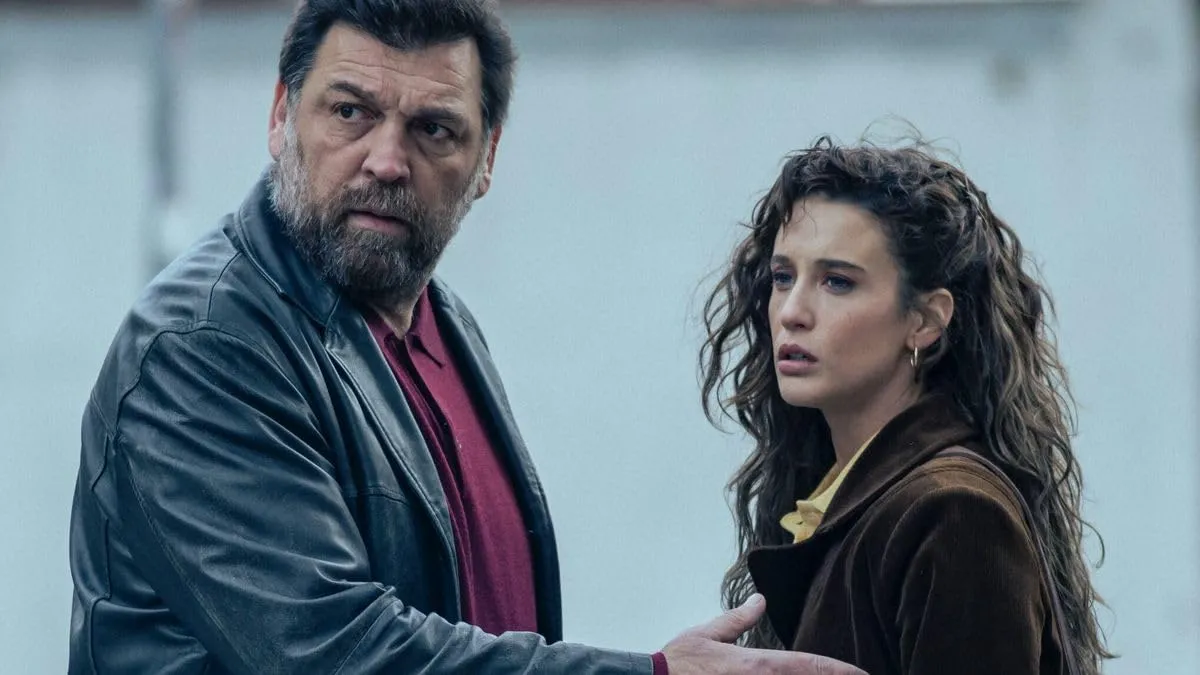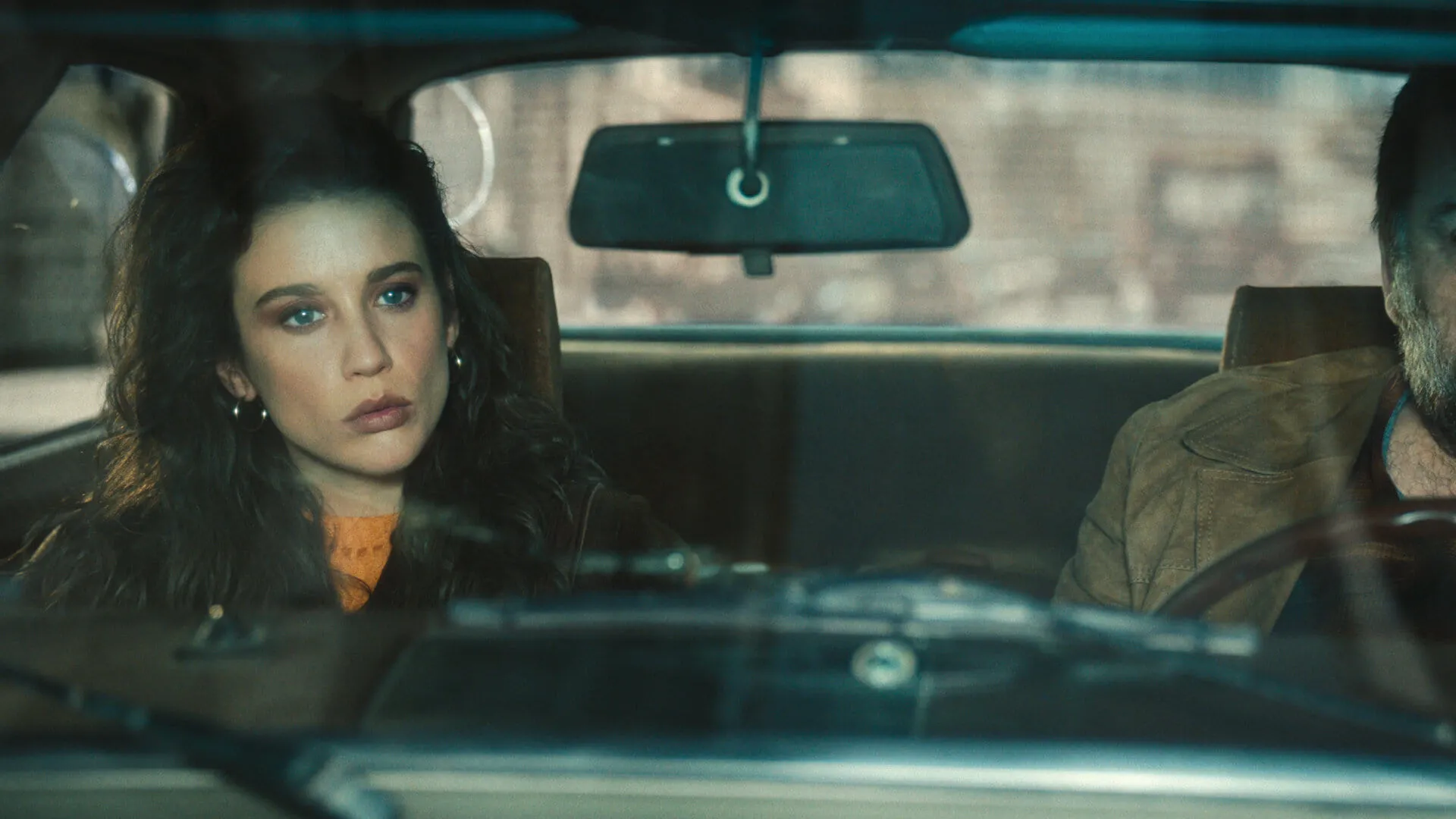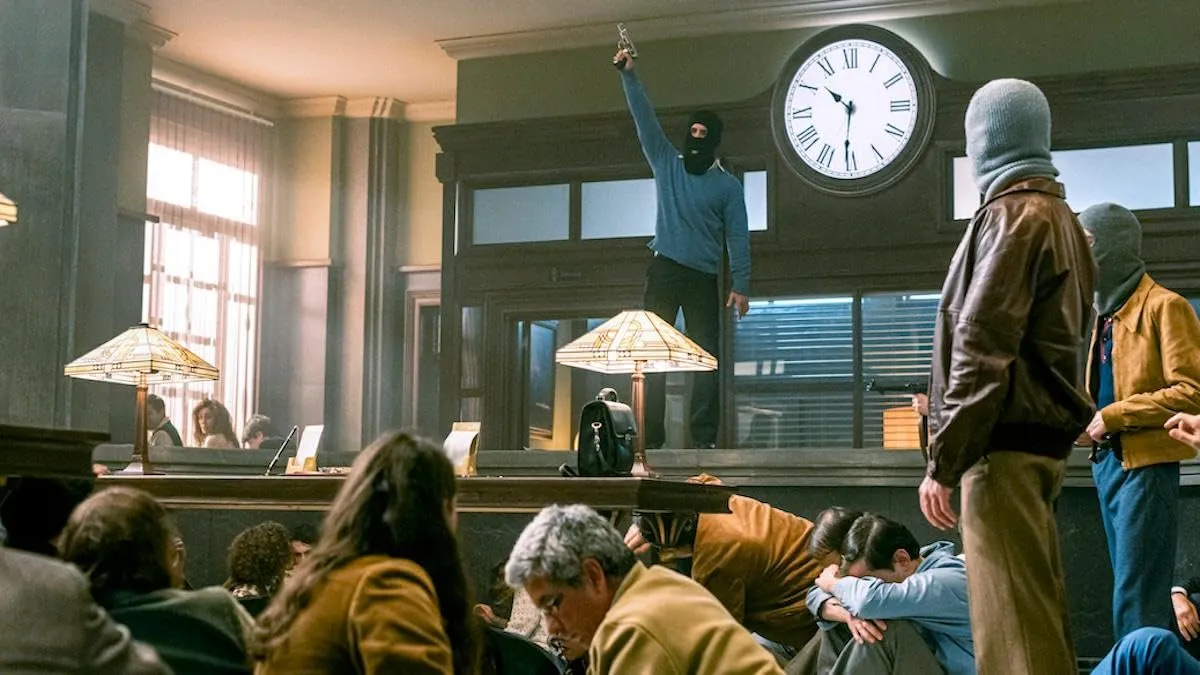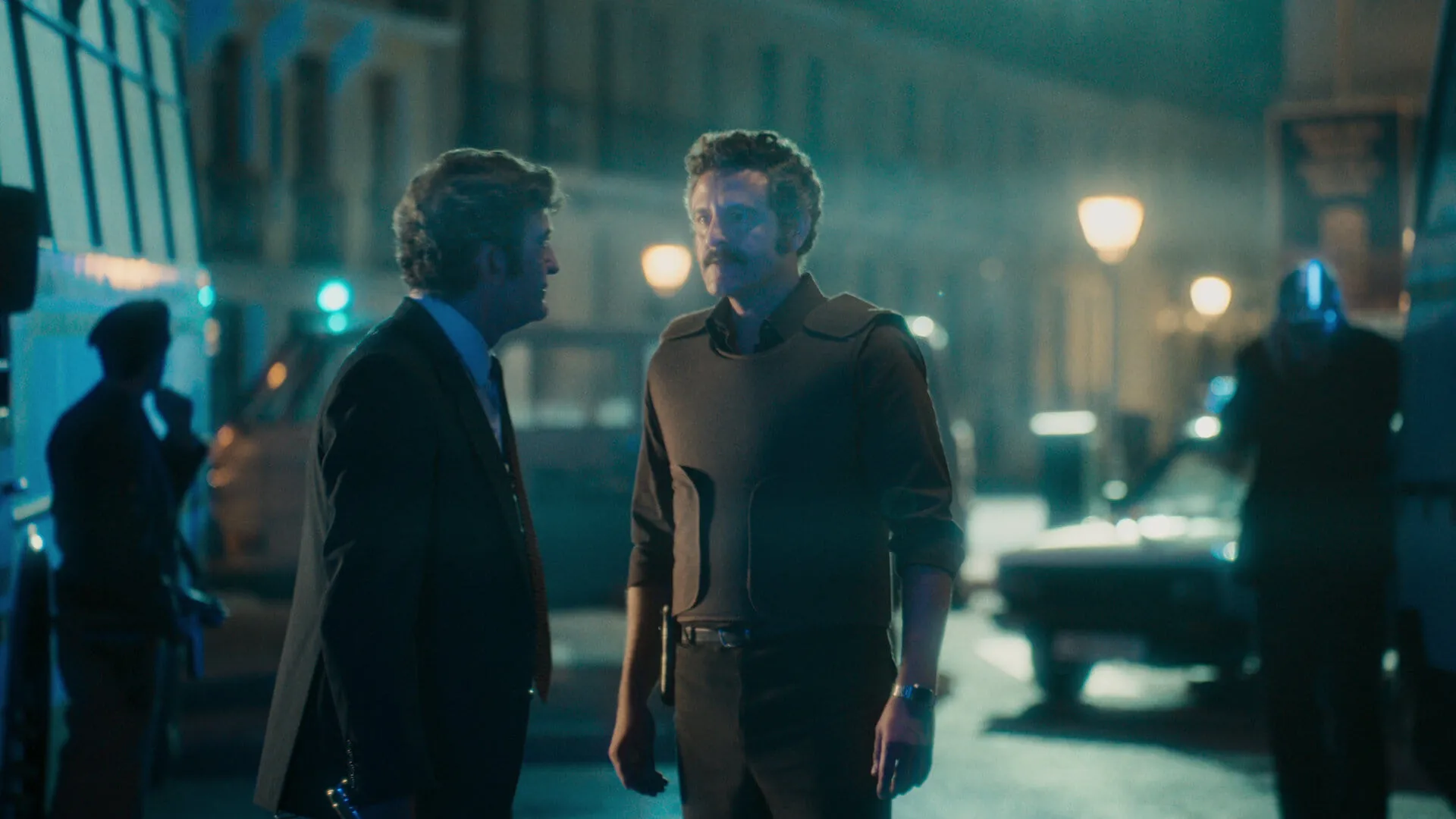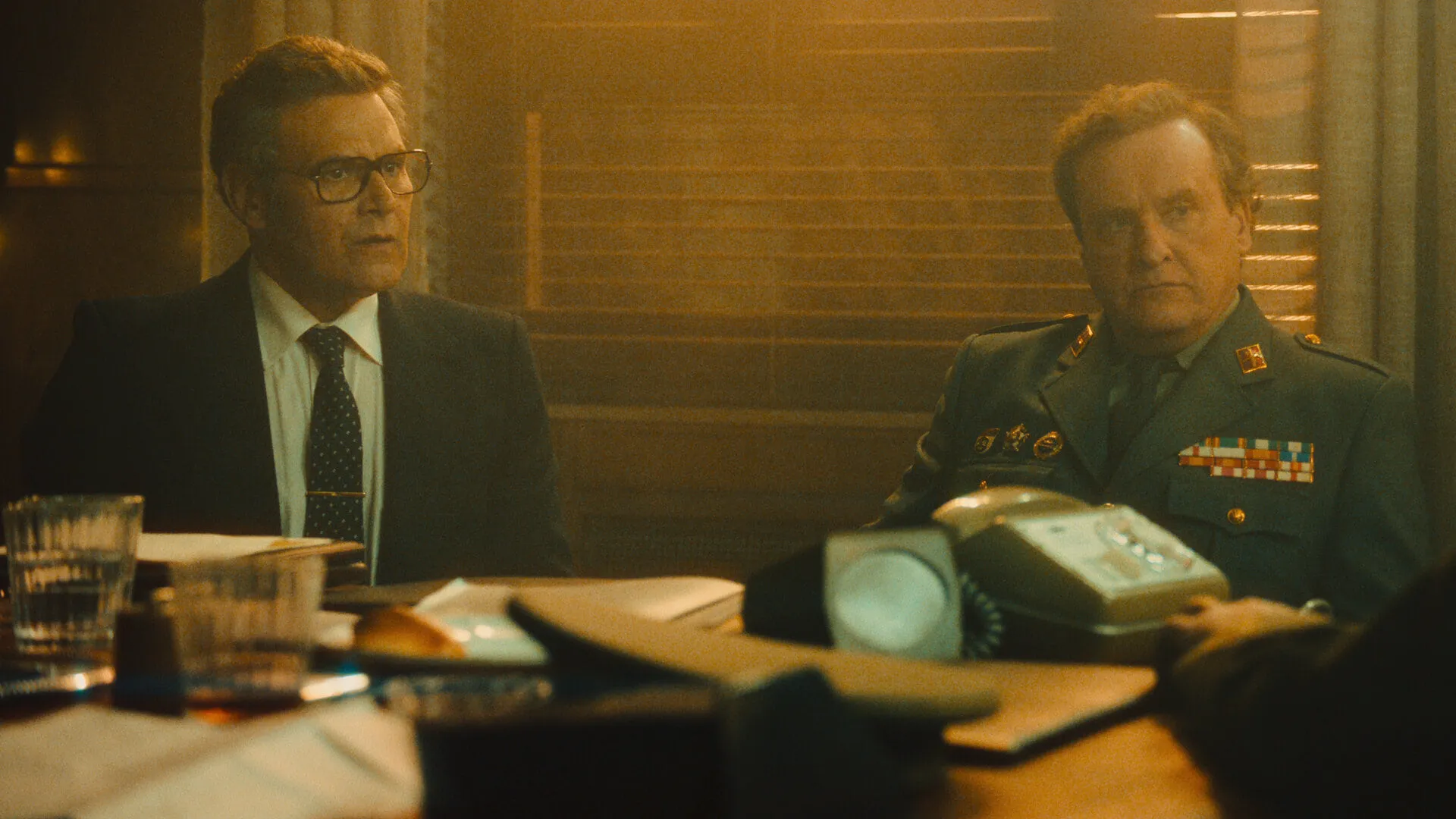In the early stages of Spain’s democracy, a risky bank robbery would become a turning point to test the country’s new political order. “Bank Under Siege” brings back to life the amazing events of May 23, 1981, when eleven men in masks broke into Barcelona’s Central Bank and turned what seemed like a heist into a powerful political statement.
Three months after a failed military coup to remove Spain’s new democratic government, these thieves took more than 200 hostages. They demanded that Colonel Antonio Tejero and the other people who were involved in the coup be freed. What at first looked like a simple criminal operation turned out to be a complicated political move meant to throw off the country’s delicate shift to democracy.
The show is set in Spain after Franco’s death and shows a country still dealing with its authoritarian past. King Juan Carlos and the new parliamentary system tried to make things different as the country emerged from decades of authoritarianism. This theft wasn’t just a crime; it was also a challenge to the new political institutions, showing how strong and determined they would be.
The story is told from different points of view, including those of the masked thieves, a new reporter named Maider, experienced police agents, and government officials. Each point of view shows a different aspect of this important conflict. When their stories come together, they show the tension, uncertainty, and chance of political change that characterized this important time in Spanish history.
Tension, Truth, and Tactical Moves
The crime is carried out like a well-oiled machine. Eleven masked men walked into Barcelona’s Central Bank at exactly 9:05 AM on May 23, 1981. This turns an otherwise normal morning into a high-stakes political play. Their leader, called “No. 1” and played by Miguel Herrán, takes charge right away by shooting through the ceiling, knocking over 200 hostages to the ground.
What seems like a simple heist quickly reveals deeper, more complicated goals. The robbers’ first demand is highly charged: They want Colonel Tejero and three other people involved in the failed coup attempt in February freed. It’s not just about money; it’s also about putting Spain’s new, weak democracy to the test.
Maider, a new reporter at Barcelona Daily, is thrown into the most important story of her career. When she is paired with Berni, an experienced photojournalist dealing with her own problems, she starts to figure out the complicated details of the theft. Her search for the truth turns into a mirrored story that matches the thieves’ planned moves.
Detective Paco López offers the police’s point of view and handles the situation by negotiating and being very precise with his actions. Considering current instability, he knows that any choice could weaken the country’s democratic roots.
As the battle goes on, figuring out what the thieves are after becomes harder. They say at first that what they’re doing is a political statement, but when they find the bank’s safe, they get excited, showing that they just want to make money. No. 1 carefully controls the situation and even shoots a young hostage to get information, showing that they are cold and calculated in their approach to their goal.
The show shows how personal goals, political tensions, and basic survival skills all come together at this unique time. The masked thieves, the reporters, the cops, and the government officials are like complicated chess pieces in a high-stakes political game.
Performers on the Edge: Characters in Crisis
The character Maider, a new reporter taking over her late father’s job, comes to life thanks to María Pedraza. Not only is she looking for a story, but she’s also navigating a complicated political scene with raw determination and openness. Her character is like the new crop of Spanish journalists: driven, honest, and eager to prove herself in a men-dominated field.
Berni by Hovik Keuchkerian is the perfect contrast to her. Berni is a photojournalist who has been through a lot and is drinking to drown his negativity. Even though he seems tired, Berni has a very good journalistic sense. He ends up becoming Maider’s mentor, which is a surprise. Their relationship is a fascinating mix of professional respect and mentoring.
Miguel Herrán’s performance as No. 1 is a lesson in controlling energy. As the boss of the thieves, he is very smart and can switch between strategic negotiations and making quick decisions. His character switches between being a political revolutionary and a criminal looking for easy money, which keeps watchers guessing about what his real goals are.
Detective Paco López, played by Isak Férriz, is a typical example of traditional law enforcement. He is methodical and a bit old-fashioned but deeply dedicated to keeping the peace. His interactions with the thieves show that he has a complex knowledge of the political tensions that led to the heist.
Isabel, played by Patricia Vico, stands out as a supporting figure. As editor of the newspaper, she leads progressively, backing Maider while keeping things professional. She knows the problems women in media face now and helps them quietly but effectively.
The ensemble cast’s performances are truly impressive for their calmness. In contrast to many crime dramas that depend on over-the-top explosions, these actors give complex, understated performances. They show how tense politics were in Spain after Franco’s death—a world torn between authoritarianism and democracy.
Each actor or actress adds a different level of depth to their part, turning what could have been simple stereotypes into deeply human portraits. “Bank Under Siege” goes from a simple crime story to a deep look at how people and governments change when they work together.
Crafting Tension: The Art of Narrative Precision
Patxi Amezcua and Daniel Calparsoro took a complicated historical event and turned it into an exciting story that reads like both a tight thriller and a complex political drama. Their way of telling stories goes beyond the limits of typical genres, making a show more like a movie than a normal TV show.
The writing shows great restraint by not making the historical events sound more exciting than they really were. Instead, Amezcua’s script carefully mixes political tension with people’s vulnerability. Each line of dialogue and plot point feels like it was carefully thought out. Instead of long monologues, character motivations are shown through small interactions.
Calparsoro’s leadership is also strategically sound. He treats the five-episode series like a long movie, ensuring the visual and emotional rhythm stays the same. The pace is planned; there are times when there is a lot of action, and then there are times when the characters talk, and things happen that give the story more depth and background.
The story’s structure is brilliant because it shows things from the thieves’, reporters’, police’s, and government officials’ points of view. This keeps the story from becoming a one-dimensional crime procedural. Each point of view gives us a different look at the complicated political situation in Spain after Franco.
Tension is carefully built, not through pointless violence but through the environment’s interaction of minds and stress. As a country moves from a dictatorship to a democracy, every action has huge political repercussions, and the series shows how scary that can be.
The creative team may have done the most impressive thing by making a historical event feel real and important right now. Viewers aren’t just watching a recreation—they’re experiencing a pivotal moment of national transformation.
Visual Echoes of a Turbulent Era
The documentary Bank Under Siege turns historical records into an intense visual experience, carefully recreating Barcelona in 1981 with amazing realism. The production design doesn’t just recreate a moment; it brings a key historical turning point to life.
The Central Bank set becomes a character in and of itself, with its tight, tense spaces and carefully rendered 1980s architecture. Vintage telephones, furniture from the period, and soft color schemes take viewers back to that time. Every part of the art speaks to the political unpredictability of the time; the places feel both official and fragile, like Spain’s new democracy.
Brilliantly, costume design shows how people interact with each other. The robbers’ ski masks become a strong political statement and a way for them to hide their identities. At the same time, Maider’s professional clothes show her growing role in a field dominated by men. The clothes aren’t just for looks; they’re also used to show the characters’ thoughts and how tense things are in society.
The cinematography has a rough, documentary-like look. The camera moves back and forth between suffocating close-ups that show how the characters feel and wider shots that show the political and geographical scene. The way the images are put together is meant to be unsettling, reflecting the insecurity in the country at the time.
Only a few special effects are used, but they work well. Scenes with gunfights and vaulting are staged with a rough, almost journalistic accuracy. The pictures’ style puts psychological anxiety ahead of big dramatic moments, making every moment feel too real.
By using visual design to tell a story, the series turns re-creating history into an engaging experience.
Power, Rebellion, and Transformation
“Bank Under Siege” is more than just a crime story; it’s also a complex look at Spain’s fragile political rebirth. The series looks into the minds of people in a country that is changing from decades of dictatorship to democracy, using the bank robbery as a metaphor for bigger problems in society.
The heist becomes a strong image of how weak institutions are. The robbers are fighting the new order, the writers are looking for the truth, and the police are trying to keep things stable even though they are fragile. Their engagement shows how hard it is to negotiate when breaking down deeply rooted power structures.
The story is full of themes of defiance. The robbers’ demands that coup participants be freed show how tense things are between people who want to change democracy and people who want to return to traditional authoritarian control. Their complicated reasons—part political statement and part criminal opportunism—show the morally unclear time.
Even though the show makes some story choices, it stays amazingly true to historical events. The dramatization doesn’t makeup events; instead, it shows how people’s feelings affect government changes. Fictional parts are meant to bring out emotional truths, not change the facts of history.
The movie shows a very important time when Spain’s attempt at democracy was in danger. Through the eyes of a different character, people can see the psychological complexity of national reinvention—the fear, hope, and uncertainty that come with big changes in society.
Beyond the Heist: Narrative Innovation
Comparisons to “Money Heist” will inevitably be made, but “Bank Under Siege” goes its way. “Money Heist” was a stylized, almost operatic thriller, but this show is based on real events and complex psychological issues.
The connections are only on the surface. Both stories are about high-stakes bank robberies in Spain with complicated political undertones. But “Bank Under Siege” differs greatly because it focuses on the historical background of romantic rebellion. Instead of the romance anti-hero stories in “Money Heist,” this series looks at institutional power in a more realistic and morally murky way.
In the heist genre, the show stands out because it accurately portrays events, almost like a documentary. It’s not about how the theft works but about the human story beneath political change. The story is more like “Carlos” or Steven Soderbergh’s political thrillers, focusing on structural tensions rather than individual heroes.
The show isn’t just about theft; it’s also about a time when the whole country had to face some tough choices. Each figure helps viewers understand how power, resistance, and institutional change work together in complicated ways.
Defining Moments: A Cinematic Triumph
“Bank Under Siege” is a great example of how to tell a Spanish history story in a way that goes beyond the limits of its genre. Its best quality is turning a complicated historical event into a deeply human story and full of psychological strain.
The show really shines with its complex performances, especially Miguel Herrán’s captivating role as the robbers’ boss, and its dedication to showing how governments change subtly. The show sometimes has trouble keeping up with the story, but it never loses its historical accuracy or focus on the story.
People who want more than surface-level activity will get much out of this. People who like political drama, history, and stories about how institutions change will be especially interested. The show requires active participation; it’s not just background noise; it’s a deep, multifaceted look at national identity.
Even though there are some small structural problems, the show is still worth watching because it accurately recreates Spain in 1981 and deeply explores power dynamics. It’s not so much about the heist as it is about the people whose lives are changed by political turmoil.
You should watch it, but consider it a thoughtful historical play instead of a typical thriller.
The Review
Bank Under Siege
"Bank Under Siege" expertly turns a true story about a bank robbery into an exciting story about Spain's difficult political shift. The show goes beyond normal crime drama tropes by weaving together personal stories with larger issues of social tension. Its strong points are the nuanced acting, the careful re-creation of history, and the in-depth look at power relations at a crucial point in Spanish democracy. Even though the show has some problems with its pacing, it is still a compelling and mentally stimulating watch that shows the human stories behind political change.
PROS
- Exceptional historical authenticity
- Nuanced performances by ensemble cast
- Deep psychological exploration of political transition
- Compelling narrative structure
- Meticulous production design
CONS
- Occasionally uneven pacing
- Some narrative complexity might challenge casual viewers
- Requires significant historical context understanding









































